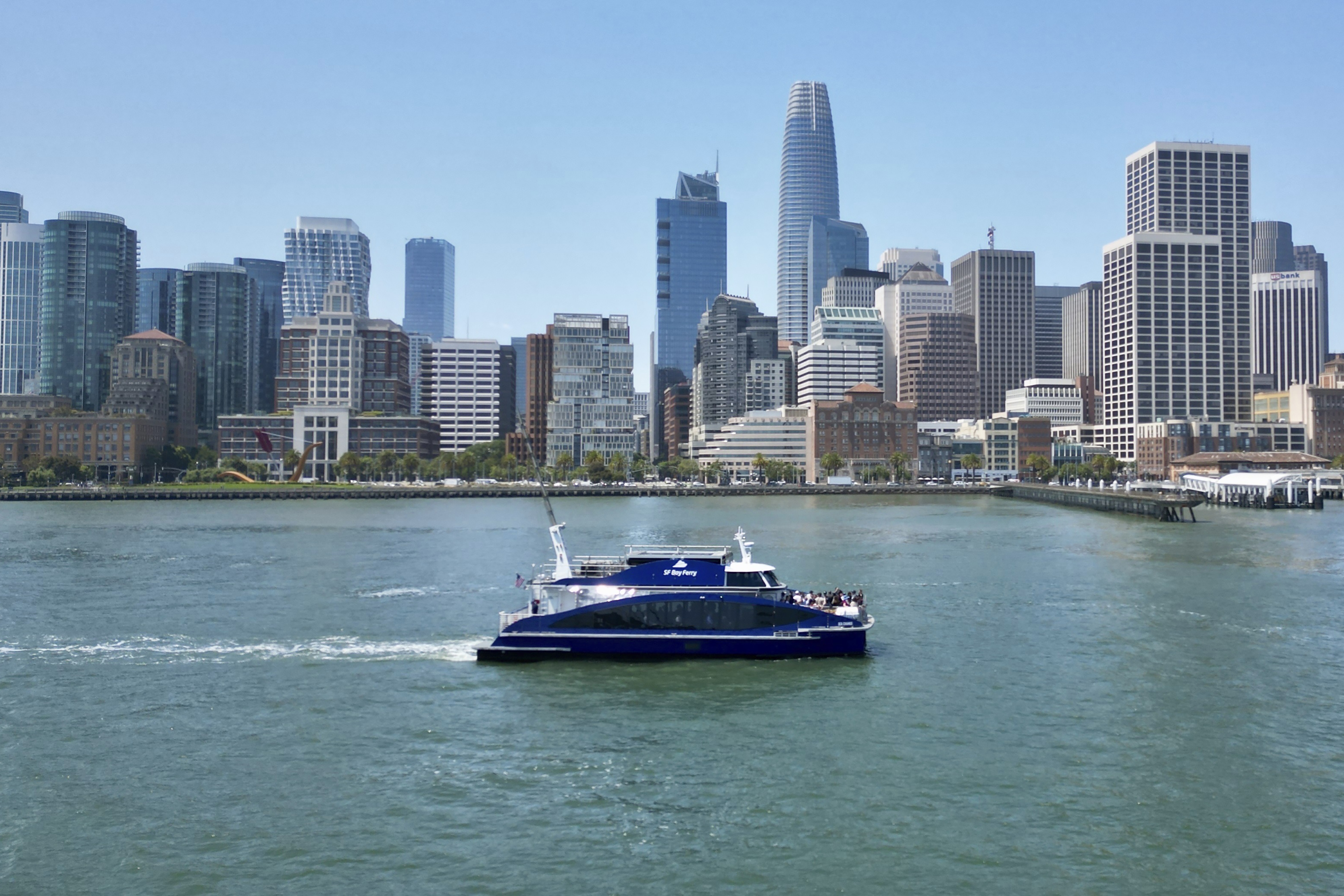A year after naming the Northwest one of seven new “regional hydrogen hubs” in a nationwide competition, the U.S. Department of Energy is beginning its review of possible environmental risks of developing certain hydrogen projects and is inviting the public into the process.

The MV Sea Change, the first commercial passenger ferry powered by hydrogen fuel cells, is seen on the water, Friday, July 12, 2024, in San Francisco.
Terry Chea / AP
The review, announced Wednesday, will analyze any adverse effects from developing hydrogen projects and the impact of potential infrastructure, their scope, design and construction. But the assessments are only a first step and do not necessarily mean the projects will go forward and receive funding, the agency said. It is holding a virtual meeting for the public in January and will take comments until spring.
The projects involve the development and distribution of “green” hydrogen energy and its end users. Green hydrogen can be produced with water and used without emitting greenhouse gases. Green hydrogen energy is seen as a key source of clean energy to help reduce climate-warming emissions from sectors that currently rely on fossil fuels and are hard to electrify because of the huge amounts of energy they demand.
The Pacific Northwest Hydrogen Hub, which includes Washington, Oregon and Montana, was chosen in 2023 to receive about $1 billion in federal funding during the next decade. Companies have proposed 10 projects for the Northwest hub so far, including several hydrogen production facilities, hydrogen distribution pipelines and storage projects, and projects that would spur adoption of hydrogen-powered trucks, buses and hydrogen refueling stations, according to the U.S. Department of Energy.

A Hyundai Nexo hydrogen-powered vehicle is at the New York International Auto Show in New York on Saturday, March 30, 2024.
Ted Shaffrey / AP
The hydrogen produced in the Northwest could also be used to make fertilizer, and power energy-demanding processes like semiconductor manufacturing.
By replacing fossil fuels in some transportation and in hard to electrify sectors, the hub could divert up to 1.7 million metric tons of carbon dioxide from entering the atmosphere each year, according to the Pacific Northwest Hydrogen Association. That’s equivalent to removing about 400,000 gasoline-powered cars from roads annually.
But the Northwest Hub has faced challenges getting off the ground, with project developers pausing plans due to unaffordable renewable energy prices as regional rates for electricity — needed to make green hydrogen — skyrocket. They’re also facing a lack of demand along with delays and confusion over a federal tax credit that was meant to spur investment and jump-start the industry.
Learn more and submit comments
Register here to attend a virtual meeting about the hydrogen hub environmental assessment on Wednesday, Jan. 22 from 6 to 8 p.m.
Submit comments on the environmental assessment process through March 23, 2025 here.
‘Green hydrogen’

FILE - Hydrogen storage tanks are visible at the Iberdrola green hydrogen plant in Puertollano, central Spain, March 28, 2023.
Bernat Armangue / AP
Green hydrogen starts with water, which is made up of hydrogen and oxygen. Using a device called an electrolyzer, an electric current is passed through the water, causing a reaction that splits the hydrogen and oxygen from one another. The hydrogen is captured and stored. The production process requires a lot of electricity. But as long as that electricity comes from a renewable source, such as wind or solar power, the hydrogen is “green” and carbon neutral. When burned as fuel, hydrogen emits no carbon dioxide or greenhouse gases, just water.
Oregon Capital Chronicle is part of States Newsroom, a network of news bureaus supported by grants and a coalition of donors as a 501(c)(3) public charity. Oregon Capital Chronicle maintains editorial independence. Contact Editor Lynne Terry for questions: info@oregoncapitalchronicle.com. Follow Oregon Capital Chronicle on Facebook and X.
This republished story is part of OPB’s broader effort to ensure that everyone in our region has access to quality journalism that informs, entertains and enriches their lives. To learn more, visit our journalism partnerships page.


